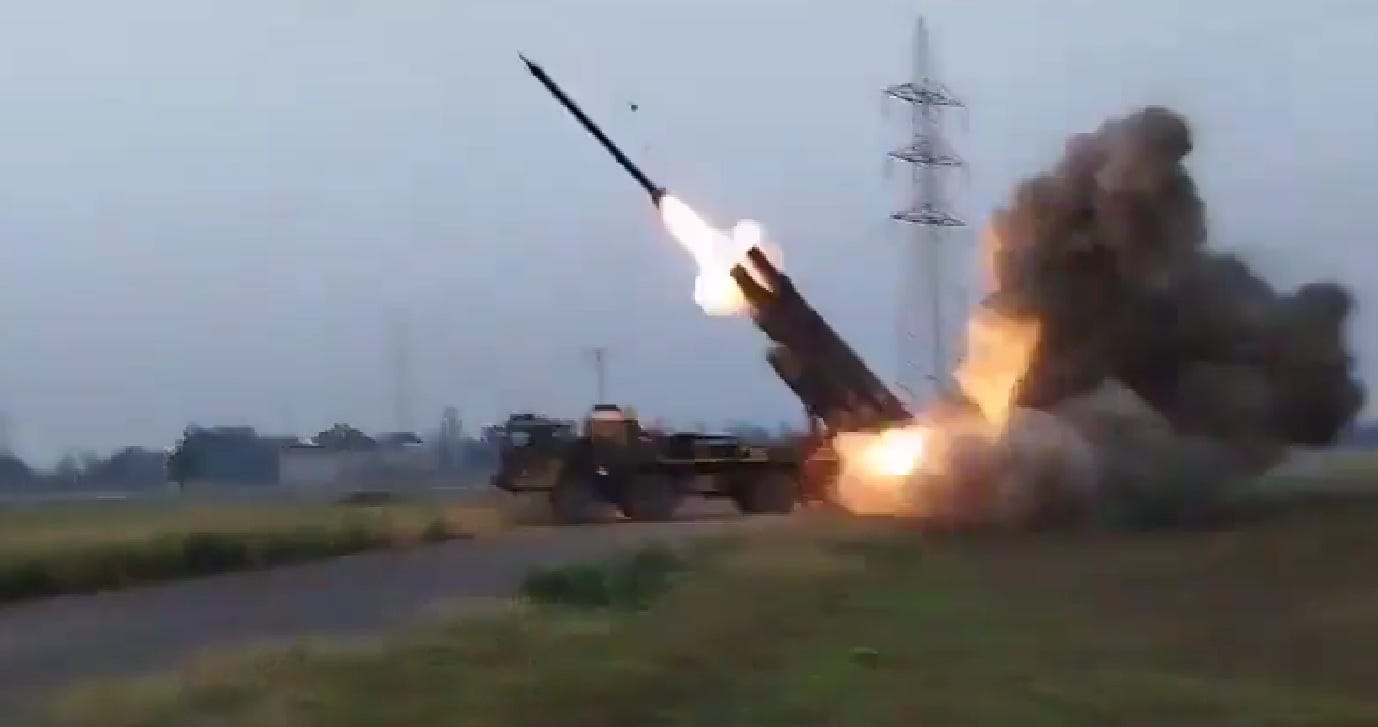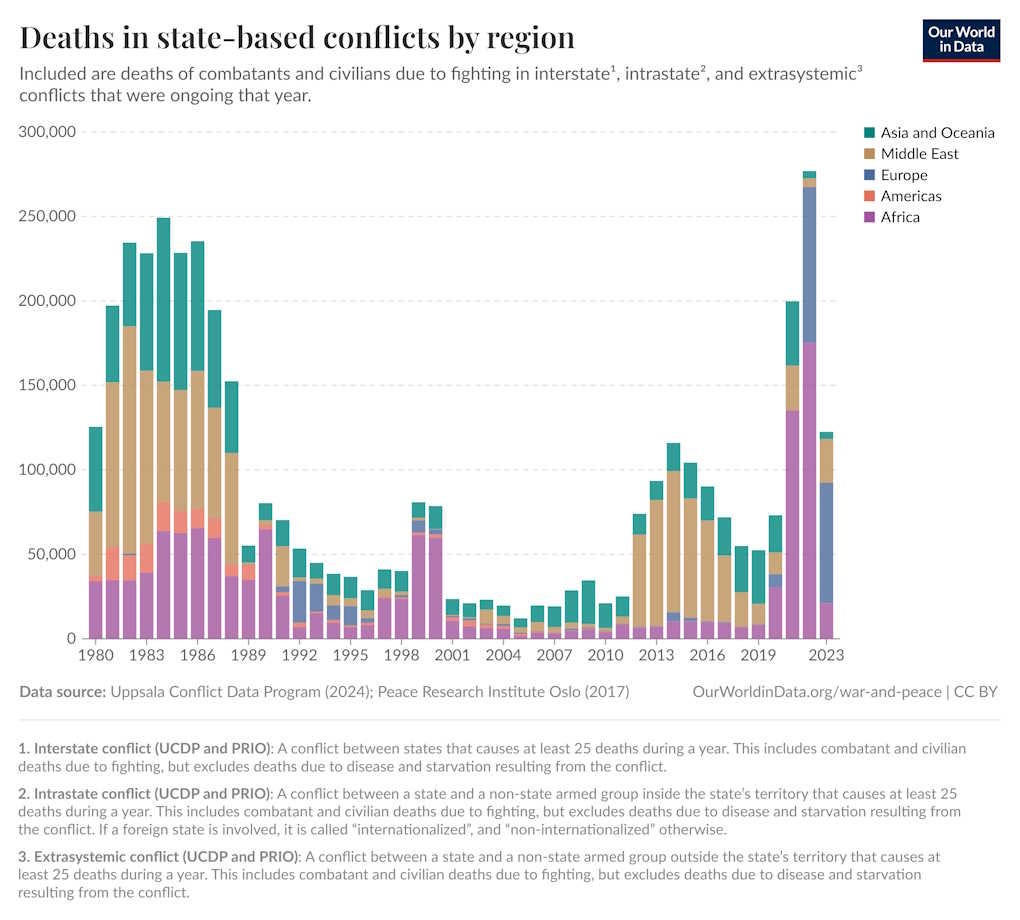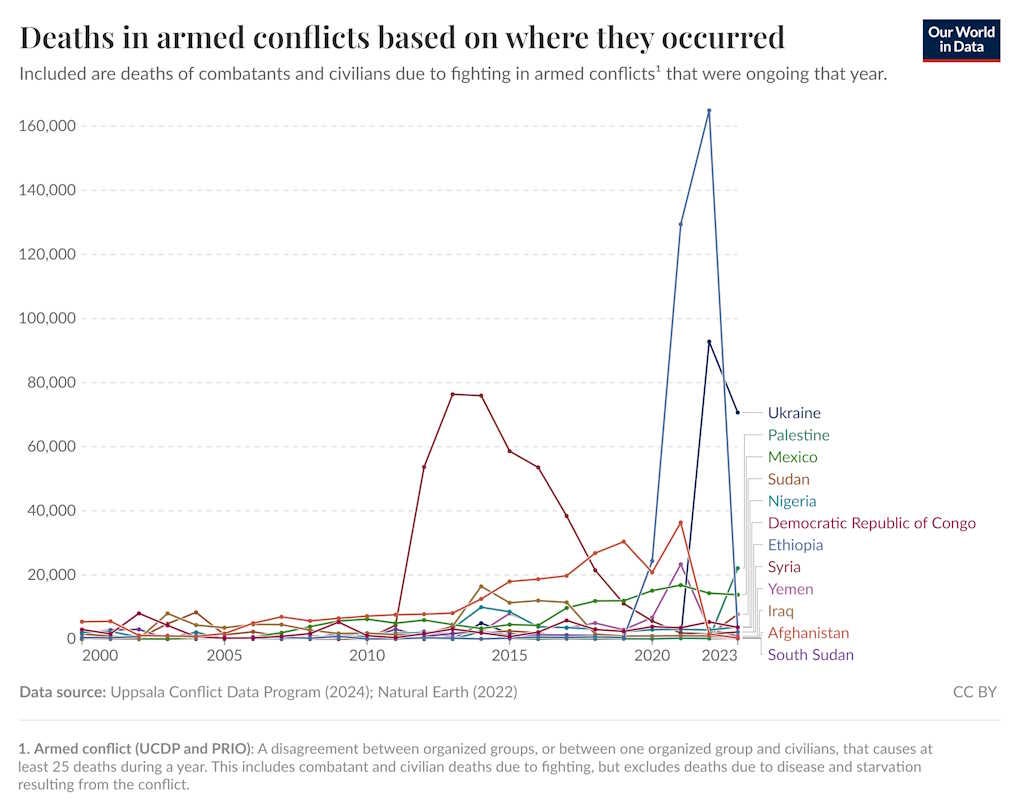The crisis of the 21st century is here
Slipping a little bit closer toward a world of war.
The big news of the last couple of days is that India and Pakistan are at war. A terror attack by a (possibly) Pakistan-sponsored group drew Indian airstrikes in response. But unlike in 2019 when something very similar happened, the two countries didn’t immediately cool things down. Instead, there has been an increasing cycle of escalation, with airstrikes, missile strikes, shelling, aerial dogfights, and so on. A lot of people are still calling it a “standoff”, but by now it’s pretty obvious that it’s a war; no one is actually standing off.
(Update: Shortly after I wrote this post, the Trump administration announced that it had brokered a ceasefire between India and Pakistan. India agreed that there was a ceasefire, but denied that the U.S. had brokered it. Shortly after that, there were reports that the ceasefire had been violated.)
This post isn’t about the blow-by-blow of the conflict — if you want, you can follow the list that I made on X.1 Instead, I want to make a more general observation: We are slipping further and further toward a world of war.
It’s a popular trope to say that war is always with us, but that’s true only in the vaguest, least informative sense. If you just count up all the countries where any kind of violence is occurring, the rate has increased only modestly over the last decade. But most of those are minor skirmishes and simmering conflicts with gangs and terror groups and little bands of ineffectual revolutionaries. When you look at estimates of the actual deaths in state-based conflicts, you can see that it took a big jump after the pandemic:
A chart of ten of the deadliest conflicts of the 21st century shows that deaths have been concentrated in recent years:
But to me, this data is less convincing than a single terrifying fact: Out of the world’s nine nuclear powers, four — India, Pakistan, Russia, and Israel — are now at war. (Update: Actually, if you count North Korea as being at war in Ukraine, it’s five!)
Even if India and Pakistan manage to climb down from the brink and avoid a protracted conflict, we should all still be unsettled. Russia and Israel are fighting non-nuclear enemies, which suggests that nuclear weapons can stabilize regions. But the fact that India and Pakistan, which are both armed with nukes, can fight each other to the degree they have — instead of climbing down like they did in 2019 — should worry us deeply.
This episode only reinforces what has been apparent for several years now — war is returning to our world. We’re slowly exiting a world of guerrillas and gangs and petty border skirmishes, and returning to the days when great powers clashed with each other regularly.
Ultimately, the reason for this is the end of Pax Americana. The power vacuum created by the decline of the global hegemon is prompting a scramble for power.
The end of Pax Americana means the world is up for grabs
In Europe, three of the last four centuries featured some kind of big “crisis” — a massive outbreak of war that destroyed the old power equilibrium among nations and ushered in a new one. The Thirty Years’ War in the early 1600s featured all of the region’s powers, and devastated the population of Germany. In the late 1700s and early 1800s there were the Wars of the French Revolution and Napoleonic Wars. And then of course in the early 1900s there were the World Wars. Other regions of the globe didn’t have such regular contests among regional powers, but they did have crises of their own — the fall of the Ming Dynasty in the mid-1600s, the Taiping Rebellion in the mid-1800s, the American Civil War, the Pacific Theater of World War 2, and so on.
This isn’t some regular clockwork cycle. The point is that over time, the stability of power relations seems to decay, both between nations and within them. This decay eventually results in a military contest to see where the new power lies.
Keep reading with a 7-day free trial
Subscribe to Noahpinion to keep reading this post and get 7 days of free access to the full post archives.




